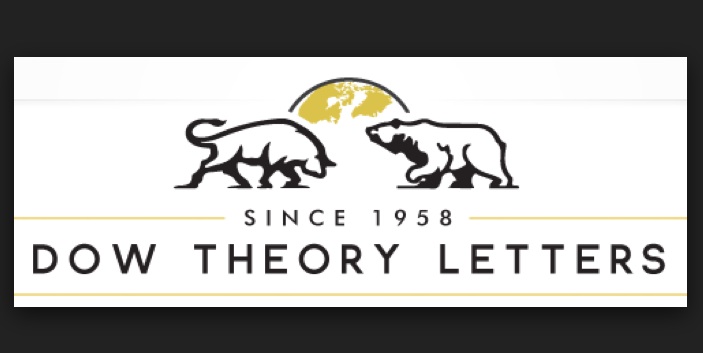
Global edible oil markets are experiencing a significant surge in prices, extending into October 2025, as a complex interplay of geopolitical conflicts, adverse weather patterns, persistent supply chain disruptions, and robust demand continues to exert upward pressure. This relentless climb is translating into higher food inflation for consumers worldwide and is forcing a strategic re-evaluation across the entire food industry value chain.
The immediate ramifications are palpable, with households facing increased expenditure on daily necessities and governments grappling with the delicate balance of ensuring affordability for citizens while maintaining stable market conditions. The volatility is reshaping global trade patterns and intensifying concerns about food security, particularly in import-dependent nations. As the world navigates these turbulent waters, the ripple effects are being felt from the fields of major oilseed producers to the shelves of local grocery stores, signaling a challenging period for both producers and consumers alike.
A Volatile Timeline: Geopolitics, Climate, and Policy Drive Price Escalation
The current surge in edible oil prices is the culmination of a series of interconnected events spanning the past few years, intensifying significantly as of October 2025. The seeds of this volatility were sown even before 2022, but the Russia-Ukraine conflict, erupting in February 2022, served as a major catalyst. With the Black Sea region accounting for a staggering 60% of global sunflower oil output, the war severely curtailed exports and availability, sending immediate shockwaves through the market. Concurrently, a severe drought in Argentina, a key soybean oil exporter, further tightened global supplies.
Adding to the complexity, Indonesia (IDX: AALI), the world's largest palm oil producer, imposed a temporary export ban in May 2022 to stabilize domestic prices, a move that sent soybean oil prices soaring as buyers sought alternatives. Throughout late 2024, palm oil prices surged over 30%, reaching a two-year high by November, driven by robust demand, concerns over decreasing supply from aging trees in Malaysia and Indonesia, and rising crude oil prices making palm oil an attractive biofuel feedstock. Policy changes also played a crucial role, with Indonesia implementing its B40 biodiesel mandate in January 2025, increasing domestic palm oil consumption and further tightening global supplies. By September 2025, Russia increased export duties on sunflower oil, pushing futures to a near three-year high, while Ukraine's exports remained hampered by conflict and poor yields.
Major global players and stakeholders are deeply entrenched in this scenario. On the production side, Indonesia (IDX: AALI) and Malaysia (KLSE: IOICORP) dominate palm oil, while the USA (NYSE: ADM), Brazil, and Argentina are pivotal for soybean oil. Ukraine and Russia remain critical for sunflower oil. Key consuming nations include China, the largest importer, and India, the second-largest consumer and largest importer, particularly of palm oil. International bodies like the FAO (Food and Agriculture Organization of the United Nations) and the USDA (United States Department of Agriculture) provide crucial market monitoring and forecasts, while national governments (e.g., India, Indonesia, Russia) implement policies ranging from biofuel mandates to export duties and import tariffs, directly influencing market dynamics.
Initial market reactions have been characterized by extreme price volatility across all major edible oils. Businesses have actively pursued ingredient substitutions; for example, Unilever (NYSE: UL) replaced sunflower oil with rapeseed oil in some products during shortages. The increased demand for edible oils as biofuel feedstocks, spurred by rising crude oil prices and mandates from agencies like the US Environmental Protection Agency (EPA), has been a significant trend. Consumers have faced direct impacts through higher food costs, leading to shifts in purchasing habits and, in some instances, panic buying. Governments have intervened with varying degrees of success, with India adjusting import duties to manage domestic inflation, highlighting the global interconnectedness and the urgent need for adaptable supply chain strategies.
Corporate Fortunes Diverge: Winners and Losers in the Edible Oil Upheaval
The escalating edible oil prices are creating a distinct divide in the financial landscape, significantly impacting the operations, profitability, and market positions of public companies across various sectors. While producers and traders of edible oils are poised to reap substantial benefits, industries heavily reliant on these commodities as raw materials are facing considerable headwinds.
Potential Winners in this environment are primarily the integrated agribusiness giants and palm oil plantation owners. Companies like Archer Daniels Midland (ADM) (NYSE: ADM) and Bunge Limited (NYSE: BG), major global suppliers and processors of various vegetable oils, stand to see increased revenue and profitability in their oilseeds processing segments. Their diversified operations allow them to capitalize on the higher market value of their products. Similarly, Wilmar International Ltd (SGX: F34), one of the largest producers and traders of palm oil globally, with extensive operations from cultivation to refining, is directly benefiting from elevated palm oil prices. Other significant palm oil players such as Sime Darby Plantation Berhad (KLSE: SIMEPLT), United Plantations Berhad (KLSE: UTDP), and Golden Agri-Resources Ltd. (SGX: E5H) are also experiencing boosted agricultural segment performance. In India, Adani Wilmar Limited (NSE: AWL), a major edible oil joint venture, and Marico Limited (NSE: MARICO), with its branded edible oil portfolio, are seeing increased top-line growth from higher selling prices. These companies, particularly the well-capitalized and integrated ones, can leverage their market position and potentially strengthen it further as smaller competitors struggle with input cost volatility.
Conversely, Potential Losers are concentrated in sectors that heavily consume edible oils. Fast-Moving Consumer Goods (FMCG) manufacturers are particularly vulnerable. Companies like Britannia Industries Ltd (NSE: BRITANNIA) and Parle Products Pvt. Ltd, major biscuit and snack producers, face a direct hit to their profitability as edible oils can account for a significant portion of their raw material costs. Similarly, diversified FMCG giants such as Hindustan Unilever Limited (HUL) (NSE: HINDUNILVR), Godrej Consumer Products (NSE: GODREJCP), ITC Limited (NSE: ITC), and Dabur India Ltd (NSE: DABUR), which use edible oils and their derivatives in food, personal care, and home care products, are grappling with surging input expenses. These companies are forced to choose between passing on costs through price hikes, which can dampen consumer demand and lead to reduced sales volumes, or absorbing the costs, thereby compressing already thin profit margins. The phenomenon of "shrinkflation" – reducing product sizes while maintaining prices – is also becoming a common strategy to mitigate these pressures.
The Quick Service Restaurant (QSR) and broader foodservice industry are also feeling the pinch. Operators like Westlife Development (NSE: WESTLIFE), which runs McDonald's in South and West India, and Burger King India (NSE: BURGERKING), with their reliance on frying oils, are seeing a significant increase in operational costs. This can lead to higher menu prices, potentially deterring customers, or a squeeze on their profit margins if they absorb the costs. Smaller, independent restaurants are often more acutely affected due to their limited bargaining power for bulk purchases. Furthermore, personal care and cosmetics companies, many of which use palm oil derivatives and other vegetable oils in products like soaps, shampoos, and detergents, are also facing increased raw material costs, impacting their manufacturing expenses and potentially necessitating price adjustments for consumers. In essence, while the edible oil producers are enjoying a buoyant market, the downstream industries are navigating a challenging environment marked by rising costs and the difficult choice of sacrificing margins or consumer goodwill.
Beyond the Immediate: Unpacking the Broader Significance and Systemic Shifts
The sustained surge in edible oil prices, as of October 2025, is far from an isolated market anomaly; it represents a critical juncture within broader industry trends, triggering profound ripple effects and necessitating significant regulatory scrutiny. This period of volatility echoes historical precedents, underscoring the inherent vulnerabilities in global food and energy supply chains.
The global edible oils and fats industry is currently characterized by persistently high prices and volatility, a trend projected to continue well into 2026. Despite these challenges, the sector is on a robust growth trajectory, estimated at USD 138.0 billion in 2025 and anticipated to reach USD 261.5 billion by 2035, driven by evolving consumer preferences for healthier and functional food ingredients. However, this growth is overshadowed by significant supply-side challenges. Unpredictable weather patterns continue to decimate crop yields, while geopolitical instability, notably the ongoing Russia-Ukraine conflict, severely disrupts sunflower oil supplies from the Black Sea region. Logistical hurdles, exacerbated by crises like the Red Sea shipping disruptions, further inflate freight costs. Simultaneously, demand-side drivers are intensifying, with increasing biodiesel mandates—such as Indonesia's ambitious B40, with plans for B50—diverting substantial volumes of palm oil from the food sector. Growing global populations, rapid urbanization, and rising disposable incomes, particularly in the Asia-Pacific and African regions, consistently fuel demand for edible oils in both household cooking and the burgeoning food processing industries.
These dynamics create significant ripple effects across interconnected industries. Food and Fast-Moving Consumer Goods (FMCG) companies face substantial increases in raw material costs, impacting products from snacks to baked goods. This cost inflation puts immense pressure on profit margins, leading to difficult decisions about raising retail prices, implementing "shrinkflation," or reformulating recipes to use cheaper alternatives like rapeseed oil. The cosmetics industry, reliant on oils for products suchs as soaps and shampoos, is similarly affected. A critical observation is the substitution dynamic: high prices for one oil often force a shift to alternatives, but the interconnectedness of the market means shortages in one area quickly cascade, driving up prices across the board. Developing economies, heavily dependent on edible oil imports, face heightened food inflation, straining household budgets and posing potential social challenges. Consequently, businesses are compelled to re-evaluate their supply chain strategies, focusing on diversification, forward contracting, and demanding greater transparency and traceability to mitigate risks.
The escalating prices have significant regulatory and policy implications. Governments are actively intervening, with countries like India adjusting import duties to either support domestic oilseed farmers or combat inflation. There's a growing emphasis on stricter market monitoring, including transparency mandates, stock audits to prevent hoarding, and improved data collection to enable timely interventions. Discussions around price controls and consumer subsidies are emerging, though their long-term market distortions remain a concern. Crucially, there's a renewed global focus on boosting domestic edible oil production through incentives and infrastructure investment to reduce import dependency and enhance food security. Furthermore, concerns about sustainability—deforestation, biodiversity loss, and ethical sourcing—are leading to more stringent regulations and certifications for oils like palm oil. The significant diversion of edible oils to biofuel production is also likely to prompt a review of biofuel policies, balancing energy security against food security.
Historically, the current situation draws parallels with several past periods of market turbulence. The COVID-19 pandemic (2020-2021) highlighted global supply chain fragility. The Russia-Ukraine War (2022) delivered a major shock to sunflower oil markets, leading to a 53% price increase and cascading effects on other oils. Indonesia's temporary palm oil export ban in 2022 further exacerbated global shortages, driving soybean oil prices to record highs. Recurring El Niño events and other climate phenomena have consistently demonstrated the vulnerability of agricultural commodities to weather variations. Ultimately, the current edible oil price surge fits into a broader pattern of general food inflation, where essential ingredients like edible oils have a multiplier effect on overall food costs, underscoring the urgent need for resilient supply chains and adaptive policy responses globally.
The Road Ahead: Navigating Volatility and Embracing Transformation in Edible Oil Markets
Looking forward from October 2025, the edible oil market is poised for a complex and dynamic future, characterized by both persistent volatility and significant long-term growth opportunities. Strategic pivots, technological innovation, and a renewed focus on sustainability will be crucial for stakeholders to thrive in this evolving landscape.
In the short-term (late 2025 - early 2026), the market is expected to present a mixed bag of signals. While overall fats and oils prices might see a slight decline compared to 2024, contributing to slower "food-at-home" inflation, specific oils like sunflower oil are likely to remain elevated. This is primarily due to continued supply tightness from major producers like Russia and Ukraine, exacerbated by adverse weather conditions in Europe that have reduced output. Palm oil inventories are also anticipated to fall into seasonal lows towards year-end, which could support prices. However, a seasonal high-yielding production cycle for palm oil, coupled with the harvesting season for rapeseed and sunflower seed in the second half of 2025, could exert some downward pressure on prices. The broader energy market also plays a role; rising global crude oil inventories through 2026 could lead to lower crude oil prices, indirectly alleviating some processing and transportation costs for edible oils.
The long-term outlook (2025 - 2035), however, paints a picture of substantial growth. The global edible oils and fats industry is projected to reach USD 261.5 billion by 2035, growing at a robust Compound Annual Growth Rate (CAGR) of 6.6%. This sustained expansion is underpinned by fundamental drivers such as global population growth, rapid urbanization, particularly in developing economies, and increasing disposable incomes. Crucially, evolving consumer preferences for healthier cooking and functional food ingredients, alongside the rapid expansion of the food processing and plant-based food industries, will continue to fuel demand for a diverse range of edible oils.
To navigate this future, strategic pivots and adaptations are imperative. Companies must prioritize diversification of their product portfolios and supply sources to build resilience against price fluctuations and supply chain disruptions. The growing consumer awareness and regulatory pressures around environmental protection and human rights demand a strong emphasis on sustainable and transparent sourcing, with technologies like satellite monitoring and blockchain traceability becoming essential. Technological innovation in extraction, refining, fortification, and biotechnology for enhancing oilseed yields will be key to improving quality, nutritional value, and production efficiency. Manufacturers must also continually innovate to meet health trends, offering trans-fat-free, lower-saturated-fat, and fortified oil options. Addressing complex distribution challenges through robust logistics strategies and reliable partnerships will also be critical.
Several market opportunities and challenges are set to emerge. Opportunities abound in the burgeoning market for premium, organic, and specialty oils (e.g., olive, avocado, almond), and for functional/fortified products that offer added health benefits. The expanding plant-based food sector also presents a significant avenue for edible oil suppliers. Conversely, price volatility due to weather, geopolitical events, and trade policies will remain a persistent challenge. Regulatory scrutiny concerning dietary fats, food labeling, and sustainability standards will impose compliance costs. Competition from alternative fat sources and ongoing sustainability concerns (e.g., deforestation linked to palm oil) will also require continuous adaptation and responsible practices.
Looking at potential scenarios, we could see a "Health & Green" Dominance, where ethical sourcing and healthy innovations drive market share. Alternatively, a "Supply Shock & Volatility" Cycle might persist, characterized by recurrent climate events and geopolitical tensions, necessitating robust hedging and diversified sourcing for national food security. A "Technological Leap" Transformation could see rapid advancements in biotech and agriculture leading to more stable supply and novel, healthier oils. Finally, a "Regionalization & Self-Sufficiency Drives" scenario might emerge, with countries like India intensifying efforts to boost domestic oilseed production and reduce import dependency, thereby reshaping global trade flows. Ultimately, success will hinge on strategic agility, technological investment, and an unwavering commitment to sustainable and transparent practices in the face of an ever-changing global environment.
A Market Transformed: Key Takeaways and the Path Forward for Edible Oils
The global edible oil market, as of October 2025, stands at a pivotal juncture, having undergone a significant transformation marked by sustained high prices and unprecedented volatility. While some prices have retreated from their record peaks of March 2022, they remain nearly double their historical averages, firmly entrenched at over 180 FAO Index Points. This recalibrated market is a critical takeaway, indicating that the era of consistently cheap edible oils may be behind us.
A summary of key takeaways reveals several intertwined drivers. Robust demand, particularly from the burgeoning biodiesel sector which now consumes approximately 30% of global vegetable oil production, is a primary factor. Indonesia's ambitious B50 biodiesel mandate, planned for mid-2026, exemplifies this diversion of edible oils from food to fuel. Simultaneously, persistent supply constraints have plagued the market, stemming from unpredictable weather patterns impacting crop yields for palm, soybean, and sunflower oils, coupled with geopolitical tensions, most notably the Russia-Ukraine conflict, which continues to disrupt sunflower oil supplies. Forecasts for 2025/26 indicate further tightness, with global rapeseed oil supplies projected to decline by 13% and sunflower seed oil stocks by 24%. Regionally, as of October 2025, palm oil remains firm, soybean oil shows stable but regionally rising prices, sunflower oil is near a three-year high, and rapeseed supplies are tight. Underlying all this is an evolving consumer preference for healthier, organic, non-GMO, and sustainably sourced edible oils, driving shifts in market offerings and production practices.
Assessing the market moving forward into late 2025 and 2026, the edible oil sector is expected to remain firm, though some rebalancing is anticipated. Leading analysts predict palm and soybean oil prices could increase by another USD 100-150 per tonne by early 2026 due to tightening supplies and sustained biodiesel consumption. Conversely, the significant premium currently held by sunflower oil over soybean oil is expected to diminish by March 2026 as supplies from the Black Sea region and Argentina potentially improve. Global demand for vegetable oils is forecast by the USDA to increase by nearly 3% in 2025-2026, primarily driven by the food sector in urbanizing Asian populations. Government policies, such as India's adjustments to palm oil duties to control inflation, and new tariffs, like China's imposition on Canadian rapeseed oil, will continue to exert significant influence on market dynamics.
In final thoughts on significance and lasting impact, the sustained increase in edible oil prices irrevocably links to broader food inflation, making essential goods more expensive globally, especially in import-dependent developing nations. This era underscores the critical need for greater supply chain resilience and diversification to mitigate risks from geopolitical events and climate change. The intense environmental scrutiny on palm oil production has cemented a lasting sustainability imperative, pushing the entire industry towards more ethical and transparent production practices, with companies prioritizing these aspects gaining a competitive edge. Furthermore, increased consumer health awareness is fostering innovation in oils, driving the development of healthier alternatives and improved extraction/fortification methods. The undeniable role of biofuels means that energy policies will continue to have a direct and substantial impact on food prices, creating a complex interplay between food and energy security.
For investors watching in the coming months, several critical factors warrant close attention. The actual implementation of higher biodiesel blending mandates, particularly Indonesia's B50, will directly influence demand for palm and soybean oil. Weather and crop forecasts in major oilseed-producing regions will remain paramount. Geopolitical developments, especially concerning Black Sea shipping corridors and any new trade tariffs, could swiftly alter supply flows. Tracking inventory levels in key exporting and importing countries will provide crucial insights into market tightness. Crude oil prices will indirectly impact the competitiveness of biofuels, affecting edible oil demand. Observing substitution trends by large importers like India will indicate shifts in demand for cheaper alternatives. Finally, staying informed on new government policies—agricultural, trade, and sustainability regulations—will be essential, as these can rapidly reshape market dynamics and investment opportunities.
This content is intended for informational purposes only and is not financial advice






